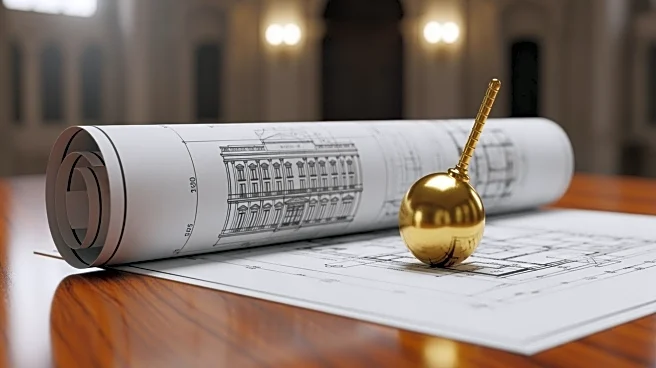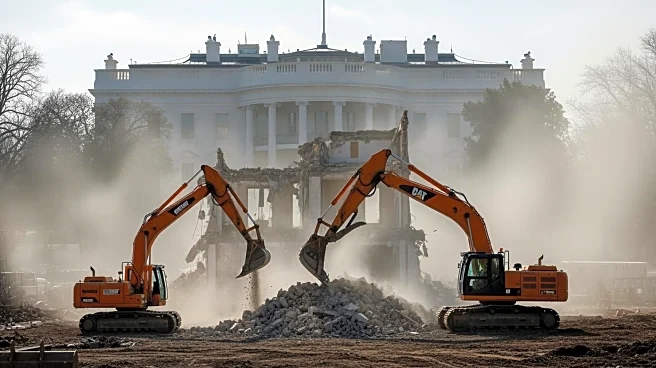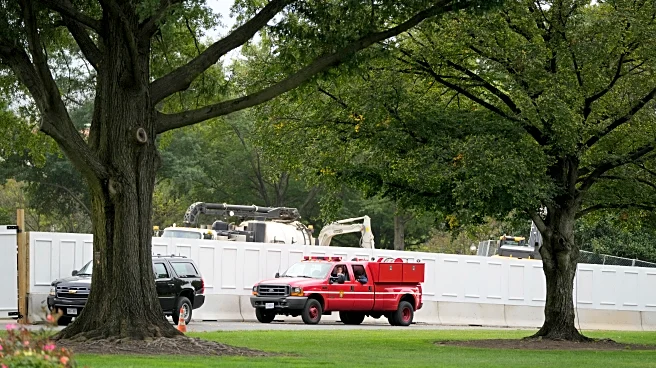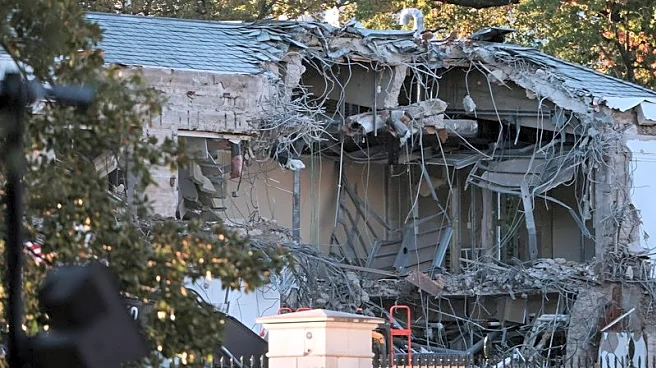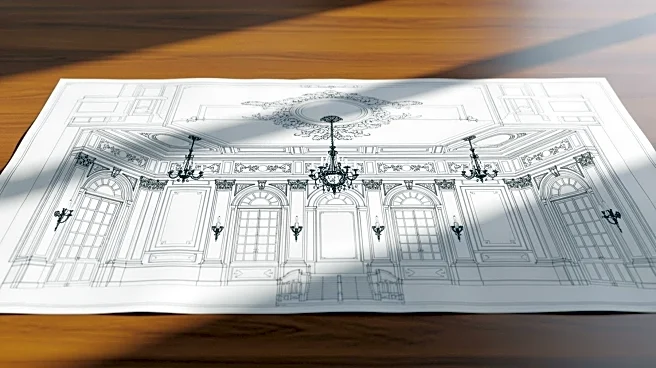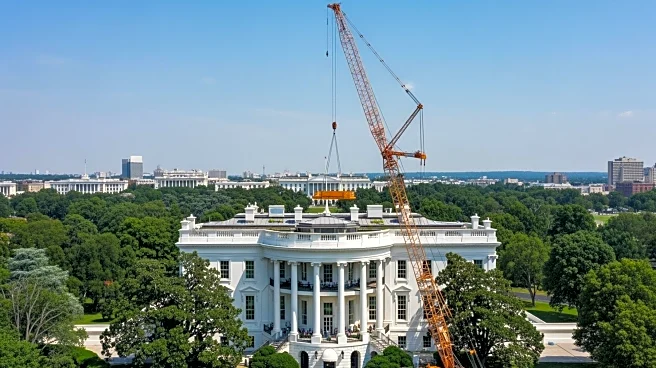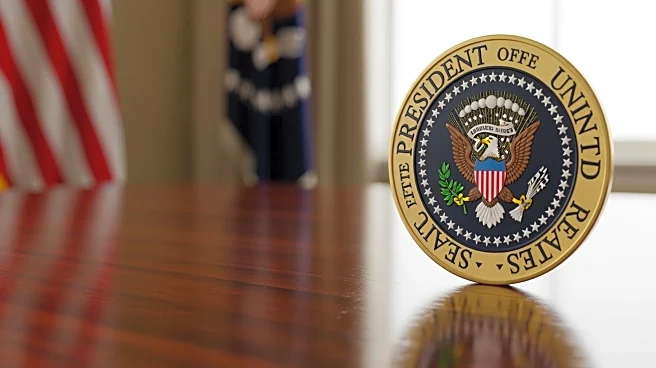What's Happening?
The White House has initiated the demolition of part of the East Wing to construct a new ballroom for President Trump. This project, announced in July, is moving forward despite lacking approval from the National Capital Planning Commission, which oversees
construction on federal properties. The demolition began with the clearing of trees and site preparation in September. The ballroom, designed to accommodate 999 people, is intended to address the limitations of the East Room, which currently holds about 200 people. The construction is privately funded, with contributions from various donors, including Carrier Global Corp., which is providing the HVAC system. The project is expected to be completed before the end of Trump's term in January 2029.
Why It's Important?
The construction of a new ballroom at the White House represents a significant structural change to the Executive Mansion, the largest since the Truman Balcony was added in 1948. This development highlights President Trump's focus on enhancing the White House's capacity to host large events, potentially increasing its utility for state functions. The project, funded by private donations, underscores the administration's ability to mobilize private sector support for public projects. However, the lack of approval from the National Capital Planning Commission raises questions about regulatory oversight and adherence to federal construction protocols. The relocation of East Wing offices during construction may also impact White House operations.
What's Next?
As the construction progresses, the White House will need to manage the temporary relocation of East Wing offices and ensure minimal disruption to its operations. The administration is expected to disclose the list of donors contributing to the $250 million project, which may attract public and media scrutiny. The completion of the ballroom will likely be a focal point of President Trump's legacy, showcasing his commitment to expanding the White House's capabilities. The project may also prompt discussions on the balance between private funding and public oversight in federal construction projects.
Beyond the Headlines
The decision to build a new ballroom at the White House reflects broader themes of presidential legacy and the role of private funding in public projects. The initiative may set a precedent for future administrations regarding the use of private donations for federal property enhancements. Additionally, the project's scale and design could influence future architectural and functional considerations for the White House. The involvement of major corporations like Carrier Global Corp. highlights the intersection of business interests and government projects, raising questions about corporate influence in public affairs.
